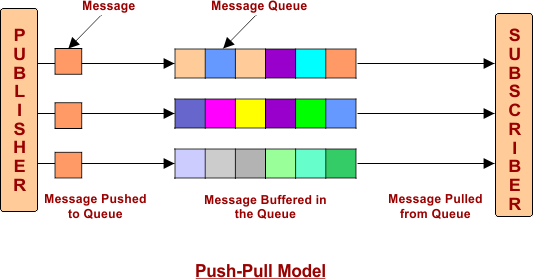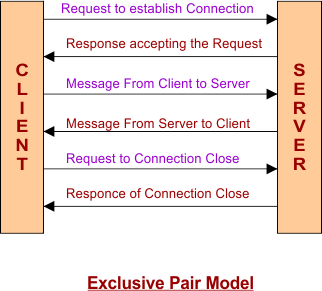IoT Communication Models
IoT allows the connection of multiple devices (things) to communicate with each other. In this article, we’ll explore the major IoT communication models, how they work, and where they are best applied in real-world applications.
Why Communication Models Matter in IoT
IoT communication models play a critical role in ensuring reliable, real-time, and energy-efficient communication between sensors, actuators, and cloud services. Each communication model determines how data is exchanged, how often it’s transmitted, and device’s responses to changes.
Choosing the right model influences
- system latency,
- data volume,
- power consumption,
- Overall scalability and reliability.
Key IoT Communication Models
Here are the four primary communication models used in IoT systems:
1. Request-Response Model
In IoT, the client device sends a request to the server. The request may be an upload or transfer of data. The Server responds to the request. The server may be remote or local and can handle the requests of multiple clients. The server receives the request, processes (decides) the response to that request, and fetches the data from resources (i.e., database).

Note: The Request-Response model is stateless, independently handling each request.
Here is a table of advantages and disadvantages of the Request-Response Communication Model in IoT:
| Aspect | Advantages | Disadvantages |
|---|---|---|
| Simplicity | Easy to implement and understand | May not be efficient for real-time or event-driven communication |
| Control | Client has control over when requests are sent | The server remains idle until a request is made |
| Statelessness | Each request is independent, making scaling easier | Requires the client to send full context with every request |
| Compatibility | Widely supported by HTTP and RESTful APIs | Not suitable for continuous data streams or real-time sensor updates |
| Security | Easier to secure using HTTPS and standard authentication | Each request must be individually secured, increasing overhead |
| Resource Usage | Efficient for low-frequency communication | Inefficient for high-frequency or continuous data exchange |
| Reliability | Predictable and well-defined interactions | No built-in mechanism for retrying or handling lost updates |
2. Publisher-Subscriber Model
There are three essential elements in the publisher-subscriber Model, as given below.
- Publisher: It transfers data to the broker. Publishers don’t know about consumers.
- Broker: It accepts publisher data and sends it to the appropriate subscriber.
- Subscriber: It consumes the topics that the broker manages.
A detailed diagram of the publisher-subscriber model is given below

Real-life Example: Imagine a news App
-
Publisher: A user uploads an article to a news app.
-
Broker: The news app acts as the broker, storing and managing the article.
-
Subscriber: Another user, who has subscribed to that topic, receives a notification and reads the article.
Here are the advantages and disadvantages of the Publisher-Subscriber Model in IoT, in table form
| Aspect | Advantages | Disadvantages |
|---|---|---|
| Scalability | Works well when many devices need to send and receive messages | It can be harder to manage with many devices |
| Real-Time | Sends messages instantly when events happen | May send too many messages to small or low-power devices |
| Loose Connection | Devices don’t need to talk directly to each other | Hard to track where messages are going or coming from |
| Flexibility | Easy to add or remove devices from the system | Needs a message broker (like MQTT), which adds complexity |
| Speed | Fast communication with low delay | Messages might get lost if quality settings are not managed |
| Saves Bandwidth | Sends data only when needed, not all the time | Harder to manage security for all devices |
3 Push-Pull Model
There are three essential elements in the Push-Pull Model, as given below
- Publisher: It pushes the data into Message Queue
- Message Queue: it is a buffer that stores data pushed by a publisher
- Subscriber: It pulls data from the message queue.
Publishers and Subscribers are unaware of each other. The Push-Pull Model is explained under

Here is a simple table showing the advantages and disadvantages of the Push-Pull Communication Model in IoT:
| Aspect | Advantages | Disadvantages |
|---|---|---|
| Decoupling | Producer and consumer work independently | No real-time data delivery |
| Flexibility | Consumers can pull data when ready | May result in delays if the consumer pulls too late |
| Load Management | Helps balance load by storing data temporarily in a buffer or a queue | Buffer may overflow if the consumer is too slow |
| Scalability | Supports different rates of data production and consumption | Requires a queue or storage system (adds complexity) |
| Data Availability | Data can be pulled anytime until it expires or is removed | Risk of outdated data if pulled too late |
| Control | Consumer controls when to fetch data | The producer has no idea when or if the data is consumed |
4. Exclusive Pair
It is a bi-directional (full duplex) combination model. In an exclusive pair, the client establishes a connection with the server by sending a request, and this connection remains open until the client sends a request to close the connection. A detailed diagram is given below.

Here is a simple table of advantages and disadvantages of the Exclusive Pair Communication Model in IoT:
| Aspect | Advantages | Disadvantages |
|---|---|---|
| Direct Connection | Devices communicate directly with each other | Not suitable for large-scale or multi-device communication |
| Low Latency | Fast data transfer with minimal delay | Connection setup may take time or resources |
| High Security | Point-to-point connection allows strong encryption | Each new connection must be separately secured |
| Reliable Exchange | Ensures data is delivered and acknowledged between two specific devices | No support for broadcasting or multicasting |
| Simplicity | Easy to manage in small networks or one-to-one setups | Complex to scale in larger IoT networks |
| Efficient Bandwidth | No unnecessary data sharing; only two devices share the channel | Limited flexibility for dynamic or event-driven communication |
Choosing the Right Communication Model in IoT
Selecting the right communication model in an IoT system is essential for performance, reliability, and scalability. The best model depends on factors like:
- Type of application or use case
- Device limitations (power, memory, etc.)
- Network availability and bandwidth
- Timing needs (real-time vs. delay-tolerant)
Below is a table that matches common IoT scenarios with the most suitable communication model, along with a brief explanation:
IoT Use Cases and Recommended Communication Models
| Use Case | Recommended Model | Why this model works best |
|---|---|---|
| Smart home automation | Publish-Subscribe | Devices (like lights or sensors) publish data, and other components subscribe to relevant topics. Enables real-time, event-driven communication. |
| Periodic sensor readings | Request-Response | Suitable for scheduled updates, such as temperature readings every 10 minutes. Simple and energy-efficient. |
| Live data streaming | Push-Pull | Data producers push content (e.g., video), and consumers pull it when ready. Helps manage speed mismatches between sender and receiver. |
| Real-time control systems | Exclusive Pair | Requires fast and secure direct communication (e.g., between a robotic arm and its controller). Ensures low latency and reliable delivery. |













